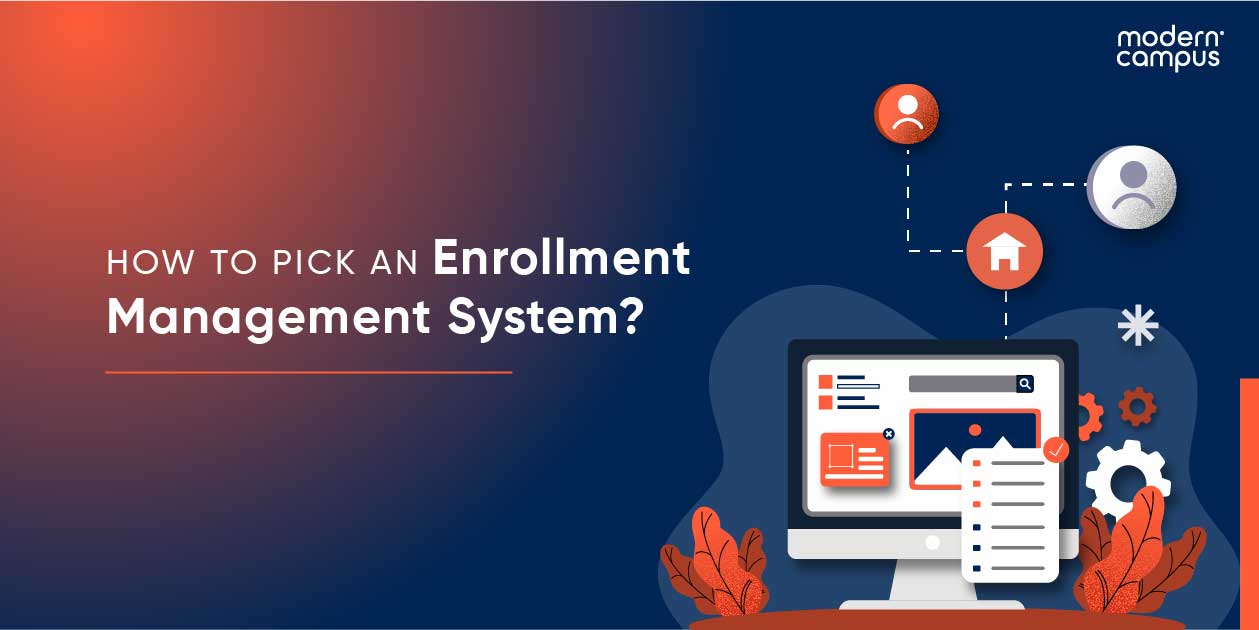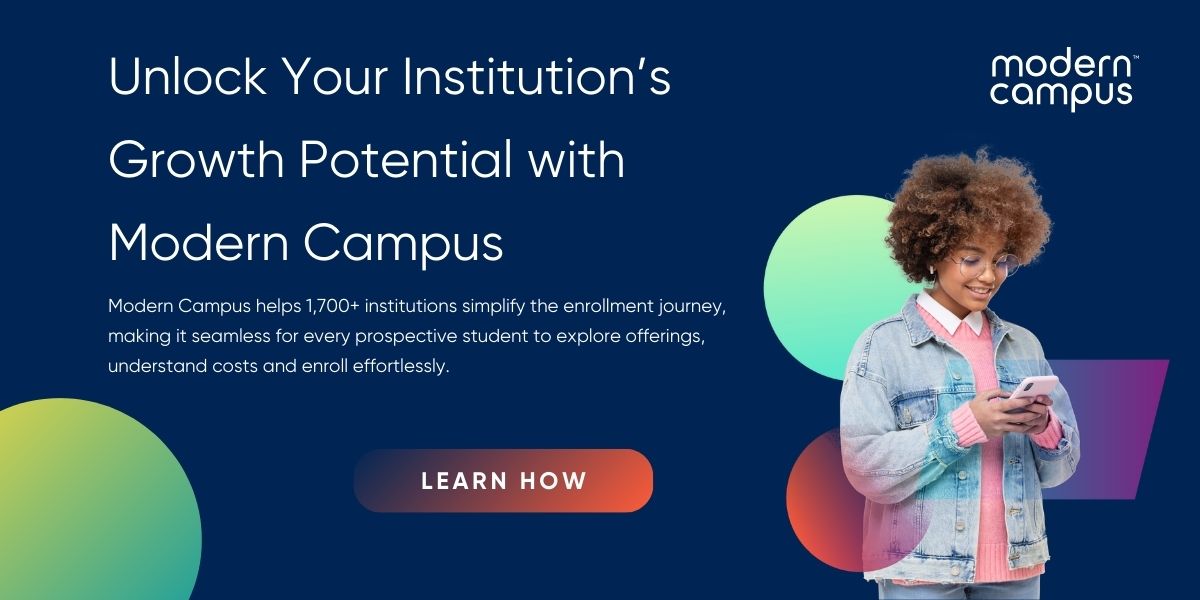How to Pick the Right Enrollment Management System
Increasing higher education enrollment is a complex group challenge. Low or stagnant enrollment isn’t caused by a single factor, and increasing student numbers isn’t possible through a single initiative overseen by any one office.
Instead, institutions must implement strategies across multiple departments to attract more prospective students, increase retention, and lower attrition. Managing it all requires steady communication, streamlined processes, data-informed decision-making, and smooth collaboration.
An Enrollment Management System (EMS) makes it possible—even with limited staff resources.
What is a Student Enrollment Management System?
An Enrollment Management System is a software solution designed to help colleges and universities manage the student enrollment lifecycle. It equips institutions with tools to efficiently attract prospective learners, support the persistence and retention of current students, connect alumni with upskilling and reskilling opportunities, and more.
Features are community-designed to support initiatives across admissions, marketing, financial aid, course registration, catalog management, student records, student affairs, alumni engagement, and continuing education.
When implemented well, an EMS improves staff efficiencies and exceeds modern students’ expectations. In other words, an EMS optimizes institutional resources while enhancing the student experience, driving enrollment, revenue, and longevity.
Key Features of Enrollment Management Systems
Begin by identifying your institution's specific goals and needs. Then, choose an EMS with features that directly support those objectives. Look for:
- Seamless integration with your existing systems to avoid disruption
- Robust analytics for accurate forecasting and data-informed decision-making
- Customizable communication tools to effectively engage prospective students
The right EMS should also include tools that enhance the student experience across the lifecycle:
- Content Management Systems simplify class publishing for administrators and marketing teams, driving student recruitment and improving engagement through personalized web content
- Catalog, curriculum, and class scheduling solutions streamline registration, helping students stay focused on their academic path
- Co-curricular and non-credit features expand access to alternative learning opportunities and drive engagement beyond the classroom
- Workforce development tools align educational outcomes with career readiness, preparing students for success after graduation
By focusing on these capabilities, your institution can optimize enrollment processes, make more strategic decisions, and enhance overall efficiency. Modern Campus has aided numerous universities in addressing enrollment declines by providing robust, purpose-built systems that support student growth and institutional longevity.
How to Pick an Enrollment Management System
Evaluate your institution’s needs and goals
Start by identifying your current enrollment challenges and objectives. Consider:
- Student demographics and target enrollment figures
- Process inefficiencies and bottlenecks affecting enrollment
- Unmet needs from both staff and students
- Student feedback via surveys or institutional data to uncover roadblocks in the enrollment journey
- Trends and benchmarks from peer institutions and national or regional reports on enrollment, admissions, and retention
- Define key features
Prioritize features that align with your institution’s specific needs. Look for systems that offer:
- Seamless integration with existing tools and platforms
- Advanced analytics to drive data-informed decisions
- User-friendly interfaces that improve adoption and usability across departments
Consider integration with other systems
Make sure your EMS can integrate with core platforms like:
- Student Information Systems (SIS)
- Learning Management Systems (LMS)
- Customer Relationship Management (CRM) tools
Smooth integration supports accurate data flow, reduces manual work, and enhances cross-departmental collaboration.
Look for customizability and scalability
Your EMS should flex to fit your current environment and grow with your institution. Consider:
- Customization options to meet unique campus processes
- Scalability to handle increased enrollment, new academic programs, or added departments over time
Seek a user-friendly interface
Ease of use is critical for both staff and students. The ideal EMS:
- Is intuitive and simple to navigate
- Requires minimal training for new users
- Delivers a rewarding experience that encourages consistent use
Evaluate data security and privacy
Your EMS must comply with data protection standards such as FERPA or GDPR. Key considerations include:
- Encryption protocols
- Regular security audits and monitoring
- Data integrity and minimization practices
- Role-based access controls to safeguard sensitive student data
Understanding the Data, Reporting, and Analytic Capabilities
A data-centric EMS not only supports your enrollment strategies—it helps shape them from the start.
The ability to track enrollment trends, software usage, academic success, co-curricular engagement, student demographics, and other key metrics—including the effectiveness of your enrollment strategies—empowers you to make informed decisions and refine your approach based on real student needs.
Look beyond the metrics and ask how the EMS delivers insights. Can you:
- Customize filters and segment by demographics?
- Simplify student data integration?
- Access real-time event analytics?
- Generate visual, easy-to-understand reports?
A robust, intuitive analytics dashboard enables more departments to better understand students and take data-informed action.
Review Training and Support
Consider how the company behind the EMS will support your usage.
A responsive support team will offer a smooth, timely implementation process and provide ongoing support to customize your usage and manage your enrollment initiatives successfully.
Empower Collaboration Across the Student Lifecycle
Managing enrollment and delivering a strong, consistent learner experience requires colleges and universities to embrace new trends, take creative leaps, and evaluate ongoing processes.
An Enrollment Management System supports this with purpose-built tools that foster cross-campus collaboration and innovation.
Last updated: March 4, 2024





